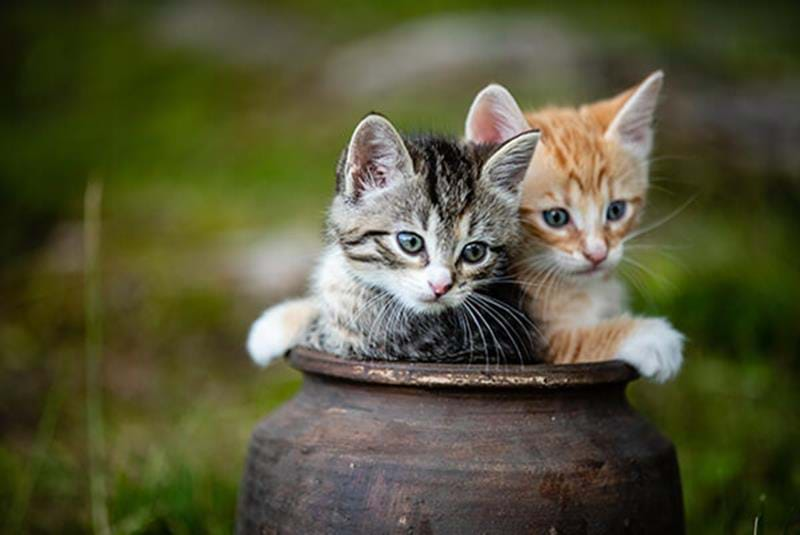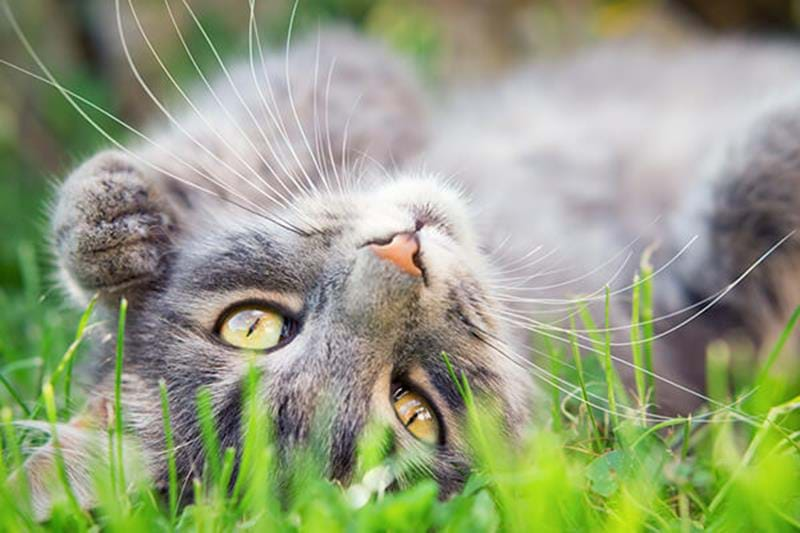Introducing cats and dogs to each other usually goes well, but it does requires careful management and patience. Base their first meeting around safety and provide both pets (or more) with the right conditions so the meeting is a successful foundation for their future relationship. Here are three simple steps to follow if you have a dog and are planning on getting a cat.
STEP 1 – HELP THE CAT AND THE DOG BECOME USED TO EACH OTHER’S SMELLS
Both dogs and cats communicate through smell, so it’s important to start by introducing the dog and cat to each other’s scents. Place them in two different rooms and let the cat sniff the dog’s blanket or toy and vice versa. If you do this, the lead up to the first meeting is less of a shock. If one of the animals reacts negatively to one of the objects, calmly remove it, put the training on pause and try again later. Don’t force anything. Let them swap places with each other, and do this for several times until both animals react calmly or positively to the other’s scent. If they just sniff at the object or ignore it, reward them with candy and praise.
STEP 2 – LET THE CAT AND DOG GET TO KNOW EACH OTHER AT A DISTANCE
Once the first step is complete and the cat and dog are used to having the other’s scent in their own territory, you can introduce them to each other, face to face. Make sure there’s something that separates them at first, such as a fence or baby gate. When you introduce your dog to a cat, it’s a good idea to have the dog on a lead so you can keep control of them if they become too excited or aggressive. Again, reward the positive and neutral reactions of both animals with sweets and praise and remember that training in small amounts is often better than fewer, longer sessions. It can take time for a cat and dog to feel safe in each other’s company and it’s very important that it is a positive experience for both animals.
STEP 3 – LET THE CAT AND THE DOG STAY IN THE SAME ROOM
Once they’ve been introduced at a distance, it’s time for them to really sniff at each other. Start letting them be in the same room, but keep your dog on a lead. If it’s a smaller dog or puppy, it may need protecting from the cat if the cat becomes aggressive. Leave any doors to the room open so that your cat has an escape route if it starts to feel stressed. Continue rewarding good behaviour so the cat and dog associate each other’s presence with something positive. Let the introduction between the animals take place in a peaceful and quiet environment and don’t leave them completely alone together for the first time. Here again, training and reinforcement are required, and only when they can stay in the same room for longer periods without becoming uncomfortable are they ready to become friends. Best of luck introducing your pets to each other.







